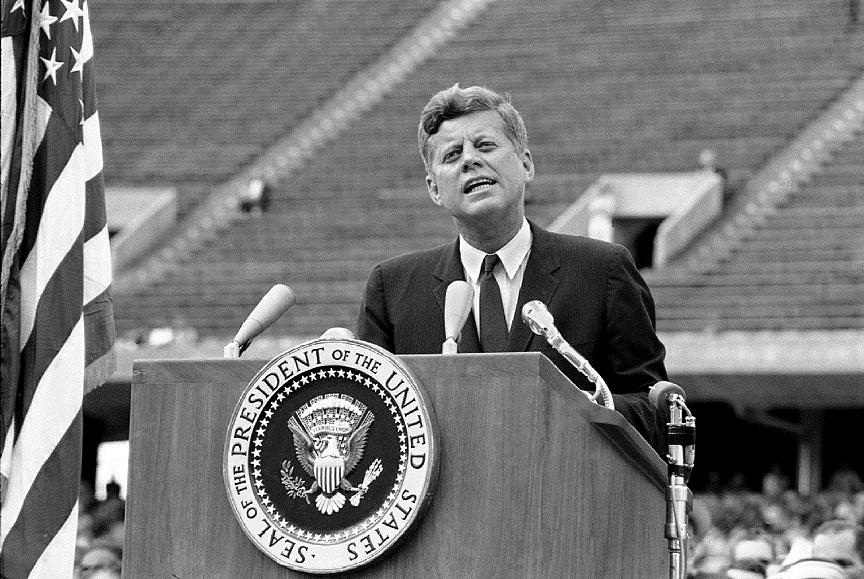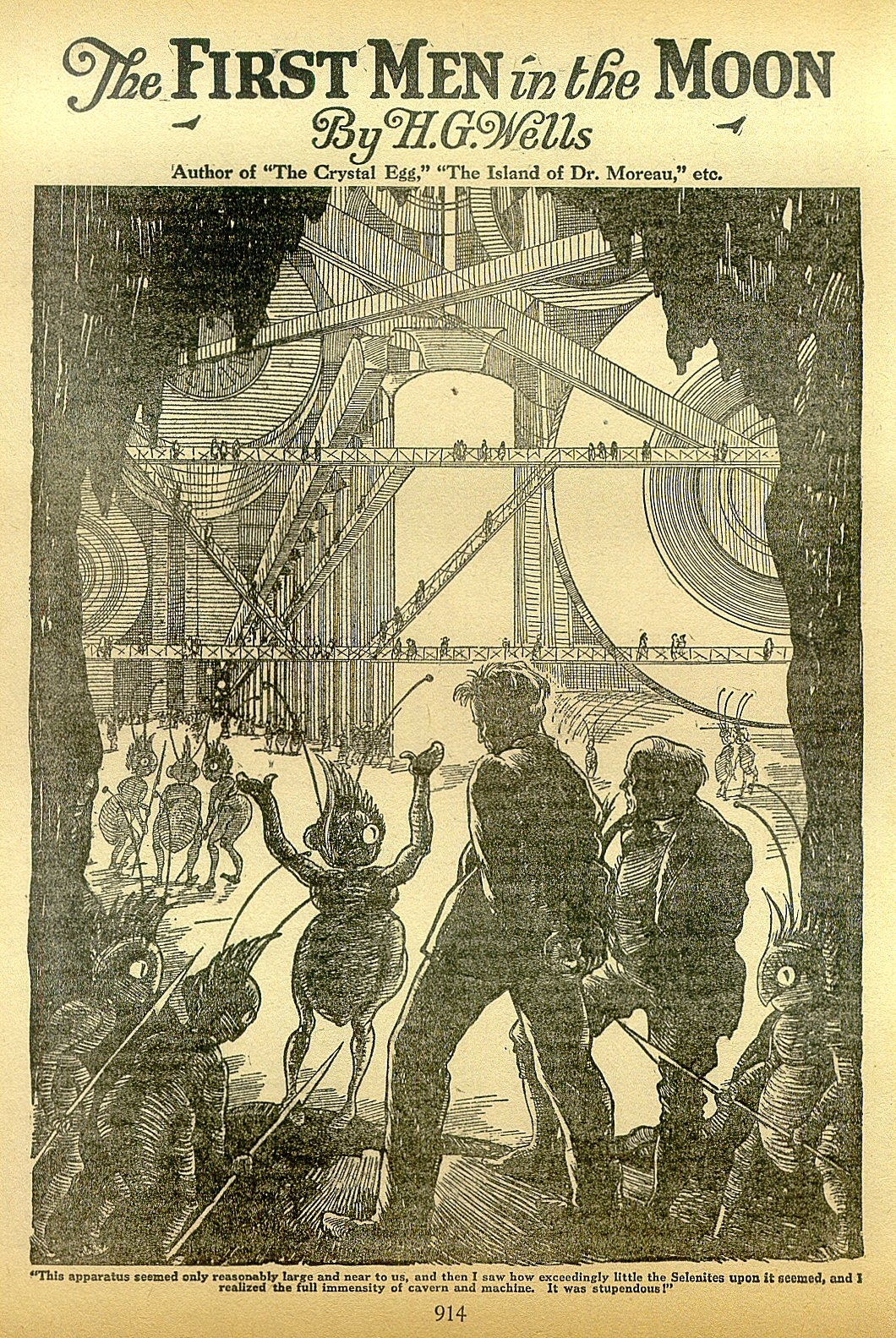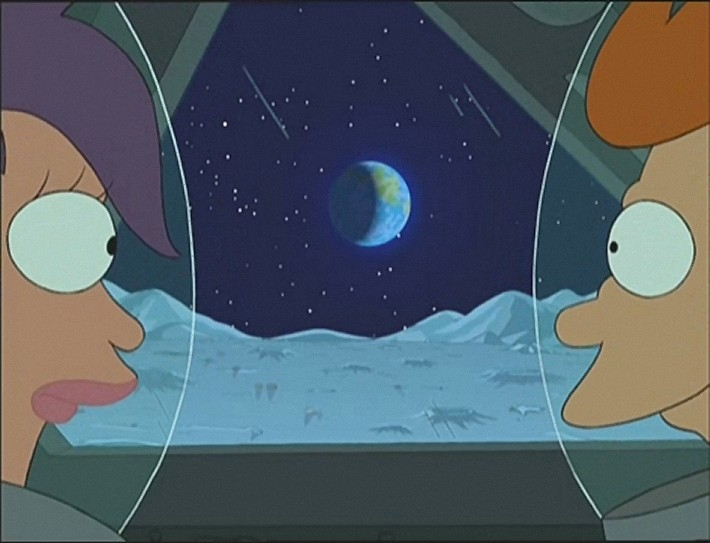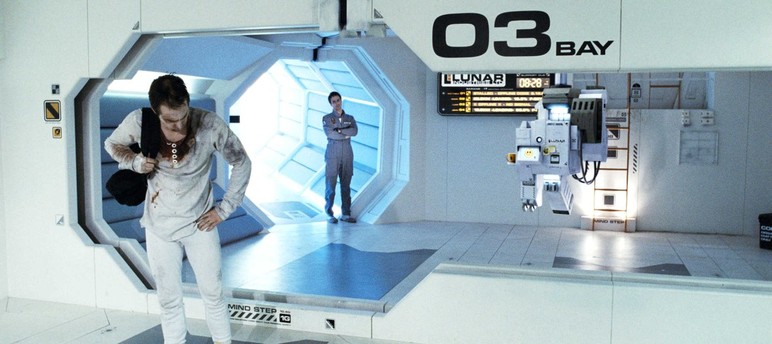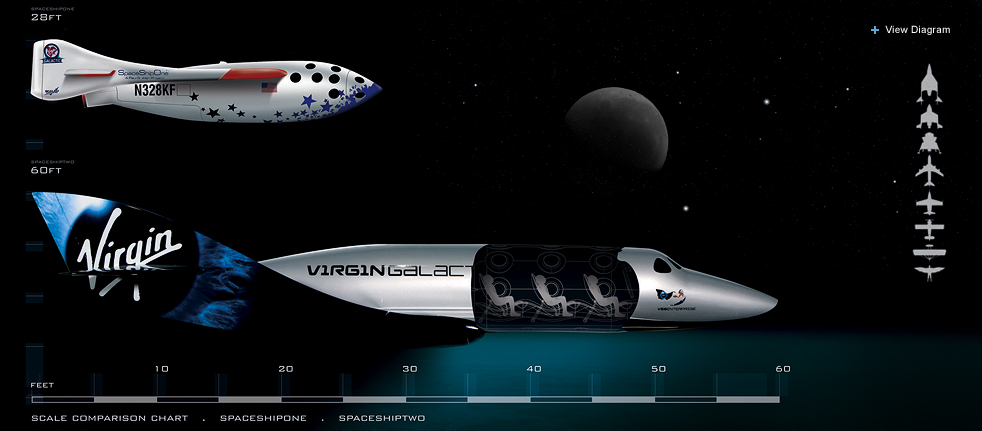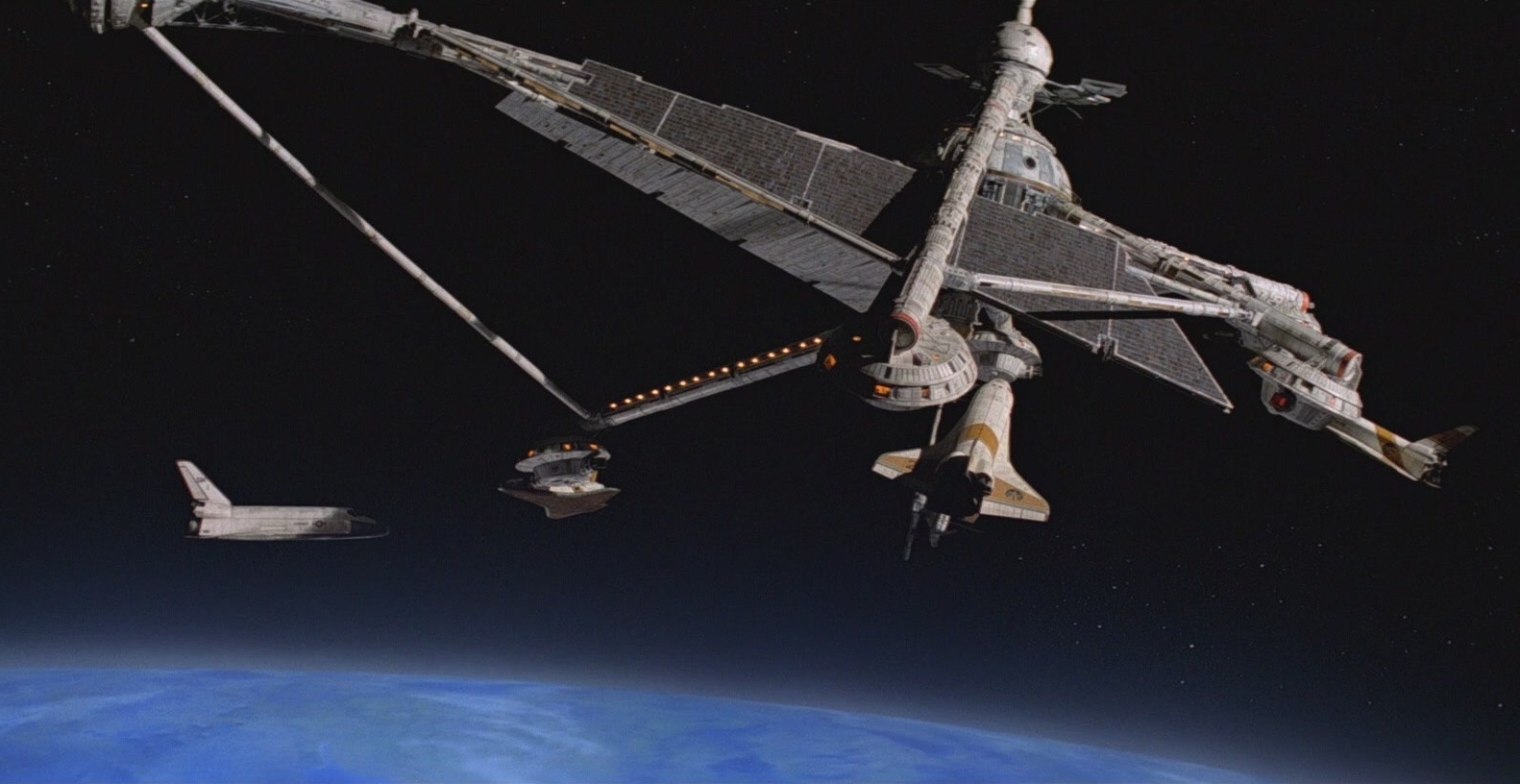For almost the entirety of man’s recorded 50,000-year history the moon has been unattainable. Alternately a heavenly body, the resting place of the gods, or a divine being itself, the moon’s earliest meanings for humanity were ultimately spiritual, if not purely sacred, largely because it was unattainable and the distance insurmountable: an enchanted, mysterious object. The basic facts of the moon’s physical reality inform the fundamental structure of its role in both fiction and history. A barren canvas, whose symbolic and ontological weight for humanity far outstrips its practical import (currently), the moon is frequently implicated in a complex reflection of earthbound power relations or cast as a mirror in which humanity apprehends its uglier truths.
Viewing the moon as a political and commercial entity in the science fiction era allows us to trace a complicated web of interrelated meanings. The Apollo programme of recent history, ostensibly about space exploration, represented a meeting of political, technological and ontological paradigms which created a global media spectacle. Assumed to be the herald of a new age, the motives and cost of the Apollo programme have since been questioned. The human impulse to travel to the moon was often couched in the edifying rhetoric of progression and nobility by the American government of the 1960s, but treatment of the subject in fiction and film both before and after the landings is typically and overtly marked by a deep-seated ambiguity surrounding the motives for exploring and/or colonising the moon, and often focus instead on the human cost associated with such grand imperatives.
In H. G. Wells’s First Men in the Moon (1901), Philip K. Dick’s The Man in the High Castle (1962) and Stanislaw Lem’s Peace on Earth (1987), the moon is deeply entangled in complex political agendas. In H. G. Wells’s novel the two central protagonists embody blind, scientific instrumentalism on the one hand, and scheming, bloody, blundering capitalism on the other. (These twin figures, used to critique imperialism by Wells, can incidentally be found in more recent science fiction such as James Cameron’s Avatar (2009).) Lem’s novel presents a satire of the Cold War from an eastern perspective, and the book’s central conceit – transferring the arms race to the moon – is structured as an apocalyptic return of the repressed. Where Wells’s satire ‘articulated imperialism as a neurosis, a guilt of the times’, Lem’s satire is built by dramatising the complex psychology of the political agendas which created the Cold War. In tone and humour the work is firmly within the vein of Joseph Heller’s Catch 22 (1961). The Man in the High Castle is comparably intended, and ruminates upon power relations and the psychology of oppressor and oppressed. Within this narrative, in which Japan and Germany occupy a defeated America after the Second World War, colonising the moon and space exploration are symptoms of the Nazi’s identification with the creative omniscience of God and a desire to be the agents rather than victims of history.
Cinematic convention tends to have a much broader remit. Films such as Destination Moon (1950), 2001: A Space Odyssey (1968), Moonraker (1979), Apollo 13 (1995), Moon (2009) and Iron Sky (2012) are characterised by divergent motives, although the moon usually plays a secondary, supporting role to the human narrative. Apollo 13’s subject is less the moon (reflecting a waning of public interest in space exploration at the time), and more human survival in the face of catastrophe. Similarly, Moon uses the lunar setting as a punishing metaphor for human loneliness and ultimately examines existentialist and ontological concerns regarding the construction of the self. Destination Moon was remarkable at the time for its relatively realistic treatment of space travel, but intriguingly posited private industry as the driving force of an American imperative to protect the country’s military and industrial hegemony. The most well-known example, 2001: A Space Odyssey draws upon epic narratives: its scope is humanity’s positive development over an evolutionary time scale, a time scale that was pointedly used by JFK in one of his landmark speeches about the lunar objective in 1962. Iron Sky, which barely qualifies as a piece of cinema, is nonetheless valid for its (admittedly very silly) handling of ideas established by science fiction writers such as Philip K. Dick’s The Man in the High Castle – it borrows the proposition of a Nazi colony on the moon and turns it into a racial farce. Similarly, Moonraker is mentioned here because it has the best knob gag of any Bond film (‘I believe he’s attempting re-entry sir’), and because the villain Hugo Drax is of the same ilk as Virgin Galactic owner Richard Branson, with his army of paying astronauts, and Philip K. Dick’s Nazis: drunk on demented visions of a God-like ability to direct the destiny of the human race.
Beginning with science fiction, as inaugurated by Wells (rather than Verne – see below) at the end of the nineteenth century, this essay traces an analytical thread through the novels and films outlined above. The explicit assumption informing this approach is that the literary, philosophical and formal interests of science fiction writers and filmmakers are intrinsically and radically different from the religious, mythical, artistic and literary appropriations of the moon which predate science fiction’s conception. As Frederic Jameson writes: ‘A mass-cultural sub-genre like science fiction has different (and stricter) laws than high culture, and can sometimes express realities and dimensions that escape high literature’. Several publications – most notably Maryam Sachs’s The Moon (1998) and Bernd Brunner’s Moon (2010) – represent comprehensive factual overviews of the moon’s multitudinous and multifaceted roles in science, religion, mythology, art and music. It will nonetheless be useful to summarise the changing attitude to the moon in the centuries preceding Wells’s First Men in the Moon, if only to bring into sharper relief the assertion of science fiction’s radical otherness. An additional source – an episode from Futurama (1999) – is also taken into consideration for its intelligent pastiche and impressive knowledge of the genre. Running alongside a discussion of the moon in science fiction is an assessment of historical events and current developments in privatised space exploration, as part of an analysis regarding the commercial and political imperatives involved. In both fiction and history, we might argue, the moon plays host to mankind’s many self-serving foibles, often buried deep within what appear to be nobler agendas.
Within the hyperbole and scripted rhetoric of man’s first steps on the moon, lies an important claim. ‘For one priceless moment,’ declared President Nixon, ‘in the whole history of man, all the people on this earth are truly one. One in their pride in what you have done. And one in our prayers that you will return home safely to Earth.’ Congratulated by an American president, gathered behind the American flag, the world united momentarily as the moon was claimed ‘for all mankind’. The substitution of mankind for the USA is a clever, pernicious and persistent device common to both fiction and reality. Just as Nixon represented the world in congratulating his astronauts, so in almost every major space-based disaster movie, in which mankind is threatened with extinction, the USA alone repels the impending apocalypse and embodies humanity fighting for survival.
At the beginning of the 1960s fear and consternation caused by the Russians’ successful launch of the Soviet Sputnik satellite in 1957 prompted JFK to announce the Herculean task at hand: sending man to the moon. The rhetoric used by the President to propose this act of faith to the nation is telling of the tone, sense of nobility and unquestionable import which would be used to glorify what was in truth an objective highly questionable from the outset in both achievability and cost (human and monetary). In two important speeches JFK laid out the reasons for forging ahead with increasing vigour. At a special joint session of Congress on 25 May 1961, he outlined his speculative budget for landing a man on the moon. In contrast to his speech a year later at Rice University, Massachusetts on September 12 1962, the tone was markedly practical. Indeed the space race and the conquest of the moon were couched in a rhetoric which is overtly military:
Finally, if we are to win the battle that is now going on around the world between freedom and tyranny, the dramatic achievements in space which occurred in recent weeks should have made clear to us all, as did the Sputnik in 1957, the impact of this adventure on the minds of men everywhere, who are attempting to make a determination of which road they should take.
In persuading Congress of the imperative to compete with the Soviets, and to be ultimately successful in reaching the moon before them, JFK was careful not to skirt the inherent difficulty of such a task. His speech invited Congress and the nation to embark upon an act of faith despite the fact that ‘no-one can predict with certainty what the ultimate meaning will be of the mastery of space.’ Yet the tangible climate of fear makes his remarks predicated upon the protection of freedom, with reference to conflicts still fresh in recent memory, resolutely effective:
In conclusion, let me emphasise one point: that we are determined, as a nation in 1961 that freedom shall survive and succeed – and whatever the peril and the setbacks, we have some very large advantages. The first is the simple fact that we are on the side of liberty – and since the beginning of history, and particularly since the end of the Second World War, liberty has been winning out all over the globe.
By contrast, in his speech at Rice University in September 1962, some fifteen months after his speech in congress, the emphasis is different. This is not to say that the rhetoric of freedom and oppression had been removed:
For the eyes of the world now look into space, to the moon and to the planets beyond, and we have vowed that we shall not see it governed by a hostile flag of conquest, but by a banner of freedom and peace. We have vowed that we shall not see space filled with weapons of mass destruction, but with instruments of knowledge and understanding.
But instead of military imperatives JFK employed a more romantic language of adventure and human progress. While JFK takes into consideration the ‘staggering sum’ of money involved, he reiterates the ambivalence of what will be bought: ‘I realise that this is in some measure an act of faith and vision, for we do not yet know what benefits await us.’ This might be considered surprising, given that spending at that early point was already about to hit ’50 cents a week for every man, woman and child in the United States’. It is telling therefore that the imagery JFK presents naturalises and reinforces the God-given right of the USA to undertake this momentous step in human progress (‘as we set sail we ask God’s blessing on the most hazardous and dangerous and greatest adventure on which man has ever embarked’). The President similarly conjures and evokes romanticised images of human (masculine) endurance and accomplishment. In concluding he remarks: ‘Many years ago the great British explorer George Mallory, who was to die on Mount Everest, was asked: why did he want to climb it? He said, “Because it is there.”’ Earlier in his speech JFK uses language which unequivocally utilises figures of heroic conquest associated with the birth of America, such as Christopher Columbus, Sir Walter Raleigh, Sir John Smith and the unnamed pioneers who colonised the West: ‘We set sail on this new sea because there is new knowledge to be gained, and new rights to be won, and they must be won and used for the progress of all people.’
While the wider political circumstances surrounding the first successful lunar landing of 1969 are readily understood, we might also emphasise that the real achievement was not the triumph of one regime, but the triumph of a mode of production. If not just a conspicuous display of terrestrial capability, the Apollo programme, which absorbed 5 per cent of the federal budget at its height, was a demonstration of the USA’s perseverance. Not just bravery, not just innovation, but spending power: the financial resources to fund the biggest peace-time technological project in history at a time of impending recession, war abroad, and growing social discontent at home. In one sense President Kennedy’s initiation of this project, and the subsequent spending, was wholly justified. At stake was not simply national pride and the success or failure of competing global ideologies. Like corporations sponsoring winning athletes for the powerful emotive glow it brings, the USA sponsored an act of space exploration which captured a global public consciousness. As the first ever truly global media event, the lunar landings entranced humanity with an efficacy that can never be replicated. The world watched as the moon was claimed by Americans. To be responsible for one of humanity’s greatest exploratory conquests is the most singularly successful piece of branding in history, as the moon landings established an imprint of corporate identity for the USA which spoke of audacious spending, pioneering spirit, incomparable bravery and the will to achieve the impossible. A super-ad for a superpower on the make in the new, post-Fordist era, initiated by a President whose manipulation and handling of image, appearance and PR redefined politics.
The moon landings of 1969 came during the decades which gave birth to the concept of ‘consumer’ society, driven, in particular, by the unprecedented economic growth witnessed in the USA during the postwar years. The same period saw the birth of the brand in a truly modern sense, with the growing realisation that a brand wasn’t just a catchy jingle or a clever ad. Rather, that a company as a whole could have a brand identity – a ‘corporate consciousness’. In his autobiographical and revelatory book Return to Earth, released as early as 1973, Buzz Aldrin, the second man on the moon, revealed that the constant emphasis on setting ‘records’ in space was totally PR-driven. And here we glimpse the true character of the landings: a PR stunt for the world’s biggest economy.
In ancient mythology and religious belief systems spanning Palaeolithic, Neolithic, Mesopotamian, Assyrian, Egyptian and Hindu, the moon has almost invariably been an untouchable, untouched, divine being. Within the Roman pantheon, Diana, virginal goddess of the hunt, was also goddess of the moon. With the transition to Christianity the moon retained its ‘immaculate’ connotations and has a rich iconographic history in Western Europe. Albrecht Durer’s ‘Madonna of the Crescent Moon‘ (1511), a small woodcut print, is a typical example of this compositional format, with the Madonna and child seated on a crescent moon, illuminated in a blaze of light from behind. Imagery of the Madonna and child was a fundamental aid to the spread of theological doctrine throughout Europe during the Renaissance. The well-known template, with the naked Christ child, (foreshadowing his own death and the pieta – the dying man on the stricken mother’s lap) explicates the redemption of original sin through immaculate conception, the theological tenet of God made flesh and the maternal love of the Church. In the ‘heavenly’ upper half of Raphael’s ‘Mond Crucifixion’ (1502-3) and either side of the crucified Christ, the sun and the moon are called forth as divine witnesses to this horrific watershed. A late Gothic wooden sculpture, ‘Virgin and Child on a Crescent Moon’, carved in Nuremberg, Germany circa 1480, illustrates a vision from Saint John in the Book of Revelations. Carved from limewood in high-relief with a polychromatic finish, the standing Madonna holds an infant Christ with the crescent moon at her feet. Another painting, by Italian painter Andrea Camessei, ‘Madonna and Two Saints (St Francis of Assisi and St Catherine of Alexandria)’ (1627) is informed by the same vision. The Virgin is shown with the crescent moon at her feet, her arms open with warmth, and a blaze of sunlight behind.
As the sixteenth century closed, and the scientific revolution gained momentum in the seventeenth, the moon’s mystery as a religious or spiritual symbol faded. The invention of the telescope, and its successive improvements in the hands of men such as Galileo Galilei, stripped the lunar body of its mythic distance. It could be studied, mapped and its features named. Speculation as to its geological composition grew, with fantastical propositions about volcanoes, underground seas and vegetation. Meanwhile the accompanying Copernican revolution saw the displacement of the moon from revered heavenly body, on a par with the sun and other observable planets (as shown by Raphael’s ‘Mond Crucifixion’), to that of humble satellite.
The nineteenth century began with romanticism and ended with imperialism. Caspar David Friedrich’s ‘Two Men Contemplating the Moon’ (c.1825-30) typifies the increasingly secular interest in nature and the cosmos at the beginning of that century, now rooted in notions of the sublime. Fascination with the moon abounded in literature, poetry and music. At the end of this century, as industrialised, colonial interests continued to spread invasive, destructive and profit-driven influence across the globe, H. G. Wells wrote First Men in the Moon (first published 1901). Lauded as one of the originators of the science fiction genre alongside Mary Shelley, Wells contributed key tenets to the form. Jules Verne’s From the Earth to the Moon (1865) and Around the Moon (1870) predate Wells’s novel by some thirty years, but Verne’s swashbuckling tales of exploration represent a less developed form of the genre. Where Verne’s meticulous accounts of lunar travel tend to the specific and the mechanical, the means by which Wells’s travellers reach the moon is a novum the author cares little about explaining in scientific terms. For him science is subject to narrative ends, not the narrative end in its own right. As China Miéville asserts:
Wells’ theory of plausible, rather than narrowly possible, extrapolation is what makes him such a seminal figure of science fiction. Science fiction is not, whatever its advocates may sometimes claim, “about” science any more than it is “about” the future. It is, like any worthwhile literature, “about” now, using a technique of rationalised (rather than free-for-all) alienation from the everyday to structure its narratives and investigate the world.
Such an approach is integral to many masterpieces of the genre. A scientific explanation of the narrative fulcrum upon which the entire structure of Lem’s satire turns in Peace on Earth – the split between the left and right hemispheres in the main protagonist’s brain – is dismissed as irrelevant in the book’s concluding pages. This device is instead adopted for the powerful tool it provides Lem in his satirical dramatisation of the Cold War and human nature. First Men in the Moon is similarly structured as critique of contemporary political realities. Wells’s two central protagonists – the scientist Cavor and the failed entrepreneur Bedford – represent the central impulses which drive man to incidental cruelty and are used to critique both imperialism and the very notion of technological progress so vaunted during the industrial revolution of the Victorian era. An instrumentalist obsession with science for the sake of knowledge alone, without recourse to the betterment and benefit of society, and unthinkingly violent, incompetent commercialism are given human form and act out Wells’s complex political reservations.
In First Men in the Moon the protagonists Cavor and Bedford use their newly fashioned space faring vessel to travel to the moon. Their motives are those of imperialism itself – profit, dominion and knowledge. And, as Miéville suggests:
In First Men in the Moon, imperialism is recast with cruel humour as a cack-handed farrago of greed, idiocy and violence….This is imperialism as drunken, rolling stupidity: but stupidity, Wells stresses, drenched in blood.
Fiercely deconstructing the notion of the ‘white man’s burden’ which was, by the time of publication, responsible for catastrophic and horrific crimes against humanity in colonised countries, Wells removes the thin disguise which veiled colonial interests. He uses the moon to encapsulate the violent folly of colonisation and its motivations. And yet, although the Selenites inhabiting the moon fall victim to Bedford’s senseless aggression, it is the construction of their society which betrays Wells’s ‘tremendous anxiety’ about the predicates of his own political vision, based upon the socialist beliefs of the Fabian Society. In the second half of the novel we learn:
“In the moon,” says Cavor, “every citizen knows his place. He is born to that place, and the elaborate discipline of training and education and surgery he undergoes fits him at last so completely to it that he has neither ideas nor organs for any purpose beyond it… At last, save for rest and food, his one delight lies in the exercise and display of his faculty, his one interest in its application, his sole society the other specialists in his own line.”
Cavor later describes an episode in which he encounters young Selenites, housed in large jars, undergoing biomechanical engineering with varying degrees of severity. The image is a powerful one:
That wretched-looking hand sticking out of its jar seemed to have a sort of limp appeal for lost possibilities; it haunts me still, although, of course, it is really in the end a far more humane proceeding than our earthly method of leaving children to grow into human beings, and then making machines of them.
At stake, here, is the tendency of industrialised capitalism to shape the worker to its needs and for society to deform man’s natural state to generate profit. Further, the organisation of society by such strict principles in Fabian thinking, while designed to liberate the worker from one set of social ills, introduces a class bound determinism and instrumentalism that must have sat uncomfortably with Wells. Likewise, his text asks plainly: is it crueller to make a machine of the man, or to make the man a machine?
Around the time of JFK’s speeches in Congress and at Rice University, Philip K. Dick published The Man in the High Castle. The novel is structured by Dick’s particular understanding of science fiction, which describes the effects of larger events on the individual and that of totalitarian regimes on the minds of average citizens. The Man in the High Castle presents a radically different outcome to World War II, in which Japan and Germany divide a conquered America along the spine. Hitler, long since dead of syphilis, still casts a long spectre and many of his lieutenants retain power at the centre of government. In Dick’s narrative the moon functions as a symbol for the hubris of the Nazi temperament:
Their view; it is cosmic. Not a man here, a child there, but an abstraction: race, land… They want to be the agents, not the victims, of history. They identify with God’s power and believe they are godlike. That is their basic madness. They are overcome by some archetype; their egos have expanded psychotically so that they cannot tell where they begin and the godhead leaves off. It is not hubris, not pride; it is inflation of the ego to its ultimate – confusion between him who worships and that which is worshipped. Man has not eaten God; God has eaten man.
Colonising the moon and other planets in the solar system is part of a wider scheme Dick attributes to the fantastical Nazi ego, their sterile instrumentalism and larger project which continues to wreak destruction across nations, continents and races.
In Stanislaw Lem’s Peace on Earth the arms race has been dispatched to the moon, where auto-optimising computer programmes, dispersed in equivalents of national territories, generate new weapons for each country. The novel turns on the role of violence, weaponry and technology in international diplomacy and parodies the one-upmanship of national security predicated upon having a bigger stick than the other guy. Taking a simple idea and extrapolating it to a farcical extent enables Lem to highlight what hides in plain sight: that peace on earth is not only impossible, but undesirable. Ultimately, the technological time bomb deposited on the moon, structured as an apocalyptic return of the repressed, sweeps the globe in molecular form like a virus, disabling every piece of programmed technology. As one character remarks: ‘We are thrown back to the first half of the nineteenth century. Technologically speaking and in general. Except that there were cannon then. We’ll have to pull them out of museums.’
Ultimately in Lem’s novel, the hubris of man is realised by the ability of auto-optimisation which the computerised arms simulators sent to the moon are endowed with. This step enables a kind of mechanical evolution, speeded up to a histrionic pace. The violent or catastrophic return of man’s creations is a central tenet of science fiction. Established in one of the genre’s founding novels – Frankenstein – the notion of our creations, made and mirrored with all the flaws of humanity, returning to wreak vengeance, or for no purpose at all like a cancer, is here adjusted to political ends. The deeper conceptual and philosophical premise of Lem’s novel is, further, the extent to which violence becomes its own justification: the idea of pre-emption and superior firepower as a deterrent. Violence begets violence.
In 1950 humanity was contemplating a trip to the moon not as fantasy or science fiction, but as reality. Destination Moon, a pioneering film for the era, was ‘revolutionary’ for its ‘rational treatment of the subject matter’. Most pertinent was the notion that the astronauts’ trip to the moon would be funded by private industry, not foreseeing that an American government could or would ever spend such sums on technology in peace time. In discussions before the flight, and in seeking financial resources, the assembled investors’ sense of patriotism is appealed to directly:
[T]he vast amount of brains, talent, special skills and research facilities necessary for this project are not in the government. Nor can they be mobilised by the government in peace time without fatal delay. Only American industry can do this job. And American industry must get to work. Just as we did in the last war.
Two further important assertions made: ‘Not only is this the greatest adventure awaiting mankind. But it’s the greatest challenge ever hurled at American industry’; and ‘The first country that can use the moon for the launching of missiles will control the earth. That, gentlemen, is the most important military fact of this century.’ We have here, then, not only early strategic considerations about the militarisation of space, but also the equation of American industry with mankind. When these amateur astronauts land on the moon their claim is comparably nationalistic: ‘With the grace of God and in the name of the United States of America I take possession of this planet on behalf of and for the benefit of all mankind.’
At this juncture it was still conceivable that one nation could ‘take possession’ of the moon. In 1967, however, the United States, along with the United Kingdom and the Soviet Union, signed the Outer Space Treaty, declaring the moon to be terra nullius – a world belonging to no-one. Roughly 100 nations adhere to this agreement today. Despite this, the militarisation of space has continued to be a subject for concern. This has as much to do with military might as with the protection of commercial interests. Noam Chomsky has elaborated it as follows:
Take what’s called the Missile Defence Program, which I think is mislabelled. It’s actually a ‘militarisation of space’ program. The missile defence component is a minor feature that nobody takes very seriously. Nobody really believes that the US is trying to protect itself from North Korea. That’s not serious. But the militarisation of space is quite serious. Like a lot of Bush’s policies, this one goes back to the Clinton period, but it’s being enhanced. We are looking at the extension of military force from armies, to navies, to the air and now to outer space… Infact, Clinton-era publications of the US Space Command describe control over space as a parallel to control over the oceans a century ago. Then, countries built navies to protect and enhance their power in commercial and strategic interests. Today, the militarisation of space is intended to protect US investments and commercial interest and US hegemony around the world.
It is now clear, over a decade into the twenty-first century, that not only the moon, but also space, is a commercial arena. Space has long since been abandoned as any sort of ‘public’ realm, whether notional or not. With countless satellites in orbit around the earth for everything from in-car navigation systems to television and communication, the modern consumer is a great beneficiary and consumer of space-enabled products, regardless of nationality. This era – the ‘Society of the Spectacle’ – in which commodity culture is endlessly reified as imagery, as advertising subsumes our visual consciousness and as a global media becomes the main form of visual culture – found its definitive watershed moment in the lunar landings of 1969. For the first time in history an event captured not only America’s attention (an estimated 94 per cent of television households in the United States watched an average of fifteen and a half hours of coverage over the two-week period surrounding the mission) but also that of the globe. Viewing figures for Armstrong’s descent to the moon vary from 500 to 600 million, a sixth of the world’s population. Remarkably, such viewing figures were only made possible by the arrival of satellite transmission in 1968. That this was an important landmark in a new era was not lost on Buzz Aldrin. Having returned to earth, Aldrin watched recorded videotapes of the breathless newscast reporters, the images of families enthralled by his galactic spectacle and slowly apprehended the full weight of the emotions which their time on the moon had stirred. This, according to Andrew Smith, is a contradiction that has since haunted the rest of his life: that ‘those most quiet and concentrated of moments on the moon could trigger a kind of mania back on earth.’ Upon returning to earth, Aldrin remarked to Armstrong: ‘Neil, we missed the whole thing.’ Here we find the true meaning of the landings: a spectacle not witnessed directly, but mediated and broadcast, dislocated and removed into the sitting rooms of the world. What’s really spectacular, however, is the superlative rate at which public interest subsequently waned.
In Apollo 13 (1995), in which Tom Hanks, Gary Sinise and Kevin Bacon play three astronauts attempting to land on the moon in 1970, the television networks are depicted as barely interested. One line is particularly telling: ‘The networks dumped us – one of them said going to the moon is as about as exciting as going to Pittsburgh’. By 2002, Andrew Smith, author of Moondust, a biographical account of the lunar astronauts, wrote of ‘thirty years of neglect’ suffered by the Apollo program, and the ‘remarkably little fuss’, and relatively ‘few official celebrations’ which surrounded the thirtieth anniversary of the 1969 lunar landings: ‘[B]y 2002, it appeared to me that the most remarkable thing about these men was the extent to which they and their far out story had been forgotten… After all, the moonwalkers were the holy ghosts of a future that had failed to happen.’
The ‘world of tomorrow’ and the excitement surrounding the advent of the space age, much vaunted with an idiosyncratic technological mysticism in 2001: A Space Odyssey, failed to arrive. In 1999, a few months before the prophetic date of the film’s title (and on the thirtieth anniversary of the landings), the cartoon series Futurama, produced and created by the team behind the The Simpsons, aired for the first time. As the twentieth century came to a close lunar neglect was rampant and the euphoria of 1969 long since passed. Culturally important as an intelligent and highly informed pastiche of the science fiction genre, Futurama deals with contemporary earthbound events through the classic technique of ‘cognitive estrangement’ and multitudinous novum. In Futurama’s ‘world of tomorrow’ (set in the early thirty-first century) the head of President Richard Nixon rules a united earth populated by ‘earthicans’. The earth’s capital is Washington D. C. and its flag is the American flag with a picture of the globe instead of the stars in the upper left quadrant. Made by an American studio, Futurama is anything if not witty and we may assume here a blatant swipe at America’s ‘unilateralism’.
For the second episode of Futurama – ‘The Series has Landed’ – the newly assembled cast of characters, a dishevelled crew of delivery company employees, are charged with delivering a package to a theme park on the moon. For Fry, a loser who accidentally cryogenically froze himself and woke up in the year 3000 after getting drunk at the turn of the new millennium (1999), going to the moon is at first an exciting thought: ‘I’m going to be a famous hero just like Neil Armstrong and all those other famous guys no-one’s ever heard of.’ Full of puns and parodies of moon-related films and reality, the episode shows a deep knowledge of the moon in popular culture. There are sight gags and puns which relate to early cinematic outings to the moon such as A Trip to the Moon (1902) and Destination Moon (1950), but in this alternate future, everyone has forgotten how the moon landings of 1969 were affected or why they took place. True to grotesque theme park kitsch, a fanciful story designed by the park’s ‘Fungineers’ involving ‘Whalers of the Moon’ (a joke about the various ‘seas’ on the lunar surface) and a ‘Goophy Gofer Revue’ haunts park visitors with a catchy ditty: ‘We’re whalers of the moon, [sung in harmony by comedy cardboard cut outs of gophers and whalers], we carry a harpoon, but there ain’t no whales so we tell tall tales and sing our whaling tune. We’re whalers of the moon,’ and so on. In setting out the full horror of the theme park phenomenon, the episode touches upon a subject which is fast becoming a fully-fledged banality: lunar tourism. Unintentionally revealing in his remarks, Fry is disappointed by his visit: ‘The moon was like this awesome, romantic, mysterious thing, hanging up there in the sky where you could never reach it. No matter how much you wanted to. But you’re right, it’s just this big dull rock.’ No amount of theorising could better summarise the popular attitude to the Apollo programme at the end of the twentieth century and the sea change in the public cultural consciousness.
Duncan Jones’ Moon (2009), a seminal addition to the lunar canon, concerns a lone astronaut manning an isolated outpost and managing four lunar harvesters which gather helium 3 from the moon’s surface regolith. Helium 3 – desirable for its potential use in energy production using nuclear fission – is the subject of substantial scientific interest. A documentary aired in 2007 on the BBC, Moon for Sale, looked at the viability of such a proposal. The technique is under serious consideration within the scientific community due to what it could mean for the world’s energy production. Even conservative estimates propose that there could be a million tonnes of helium 3 in the moon’s regolith, enough to provide clean energy for the next thousand years.
In Jones’s ecotopia, a giant interplanetary company, Lunar Industries, provides 70 per cent of the world’s energy supply with helium 3. The film follows Sam, an engineer tasked with manning the base for a three year stretch before he can return home. His only company is Gerty, a robotic assistant who oversees much of the mission’s functions, in a manner comparable to HAL 9000 in 2001: A Space Odyssey (although Gerty is ultimately benevolent where HAL is malevolent). As Sam nears the end of his three-year contract we realise that he’s a clone, with a three-year life cycle. There are more surreal sections to the film when the next clone wakes up and cohabits with the older version as his body begins to deteriorate. Through careful manipulation of the communication facilities – Lunar Industries use a radio jamming system so Sam can’t contact earth – and low-key management by Gerty, the clones are usually steered through their three-year life cycle with little trouble. This includes recorded messages from Sam’s wife and family but we later find out that his wife has been dead for several years and his daughter is now much older than we thought her to be. At the heart of this is a corporate instrumentalism prefigured in Wells’s First Men in the Moon and the bio-engineered Selenites. In both instances, the benefit of ‘society’ wreaks substantial, lethal and ontologically disruptive physical changes upon the individual subject. Moon‘s conceit even goes so far as to threaten the very possibility of an individual, crafting the man into a reproducible unit. The full tragedy of the psychological delusion is exposed when we realise the clone’s memories are not his, that they belong to another man. How, then, to exist, to have an individual identity, to be human, when everything you have longed for is not yours? This fate is orchestrated by a corporation for the sake of profit, a harsh reality understood by the new Sam:
Look, it’s a company right? They have investors, they have shareholders. Shit like that. What’s cheaper – spending time and money training new personnel or you just have a couple of spares here to do the job. It’s the far side of the moon! The cheap fucks haven’t even fixed the communication satellite yet…You really think they give a shit about us? They’re laughing all the way to the bank.
Behind the ecotopian mask, and the soothing self-congratulatory tones of the Lunar Industries infomercial at the beginning of the film, profit, shareholders and investors are responsible for the clone’s existential crisis. A crisis located on a tragic frontier – the individual’s right to life.
A deeper conceptual proposition of Moon turns on the difference between the robot Gerty and the clone versions of Sam. At one point the old Sam insists: ‘Gerty, we’re not programmed. We’re people. You understand?’ In most cases we might be inclined to agree. But Sam and his clone brothers are precisely that – programmed, and programmed quite precisely. A new one is switched on every three years, with implanted memories and delusions of vital life. Gerty is later revealed to have an empathic understanding of old Sam’s plight as he comes to terms with the reality of his existence. Gerty gives old Sam the password needed to access the full database for ‘Sam Bell’ – the original Sam. Later asked by old Sam why he had done this – something which we can assume would be against his programming for the security of the mission – Gerty replies, ‘Helping you is what I do.’ If this doesn’t reveal an equivalent of human empathy per se, it at least reveals a decision made by the robot Gerty which prioritises the fate of the old Sam clone over that of Lunar Industries’ security. The implied result is a decentring of what we might expect from the different protagonists: the robot Gerty is revealed to be caring and empathic, the clones of Sam are manufactured like tools or machines, and the human corporation is shown to be entirely inhumane and callously instrumentalist. What might be noted is that communism subordinates the individual to the whole, emphasising the reproducibility and replaceability of the human animal and the irrelevance of individual identity. In a comparable manner, a capitalist agenda, albeit clothed in an environmentalist solution, here makes concrete and physical the ideological content of communism. A similarly brutal imagery is employed by Wells in his description of Selenite society and their careful management of physiognomy.
Back in the real world, Virgin is one of the main corporations breaching out into space tourism and privatised space exploration. Richard Branson, the billionaire entrepreneur behind the sprawling multinational, registered the trade name Virgin Galactic as far back as 1990 and has since developed a fleet of space-going vehicles. Mainly specialising in commercial space flight and the small satellite market, Branson has also begun to sign up paying tourists for flights to the edge of space. In a perfect synchronisation of celebrity banality, the growing commercialisation of space and the corporate era of space exploration, actor Ashton Kutcher was the 500th person to book a seat on board one of Virgin’s flights. According to its website, ‘the company has now accepted deposits for suborbital flights on SpaceShipTwo from 529 future astronauts, a number greater than the total count of people who have been to space throughout human history.’ Surely a new era beckons. With annual revenue of £13 billion, Virgin is one of the ultimate brands, if not the consummate brand. Branson rarely sits on the boards of his 400 franchised companies (with 50,000 employees worldwide in 34 countries) and instead licenses the Virgin name to work for him. Ultimately, it may be that ‘British’ (Virgin is a British company) industry will be the final herald of a new space age, in fully branded space craft blazing their logos across the heavens.
Virgin are yet to plan trips to the moon but there are currently two companies in the running. Excalibur Almaz, a space company based on the Isle of Man and Space Adventures, an American firm, are both selling flyby trips to the moon for $150 million per seat. Space Adventures already claims to have sold one seat, but neither company will begin work to prepare their space-going vessels for launch until they’ve sold all of them (two for Space Adventures and three for Excalibur Almaz).
Where astronauts of the Apollo programme were paid peanuts – a few thousand dollars a year, and often charged for bed and board while on missions – the next generation of ‘pioneers’ will all be millionaires, if not billionaires. Richard Branson, with his programme of space exploration and global empire, is a contemporary foil to the character of Hugo Drax in Moonraker (1979). Technically a misnomer (none of the action takes place on the moon), the film betrays utopian desires for space colonies and the birth of the space age (at least in box office terms). In one speech, which would be moving if it weren’t so silly, Drax eulogises about a new super race, closely aligned with Nazi ideology:
First there was a dream, now there is reality. Here in the untainted cradle of the heavens will be created a new super race. A race of perfect physical specimens. You have been selected as its progenitors. Like gods your off spring will return to earth and shape it in their image. You have all served in humble capacities in my terrestrial empire. Your seed will pay deference to the ultimate dynasty that I alone have created. From their first day on earth they will be able to look up and know that there is law and order in the heavens.
That first line wouldn’t be so poignant if the tagline for Virgin Galactic wasn’t ‘Dreams inspire reality.’ The new era of space travel is likely to be one of billionaire entrepreneurs driving the commercialisation of space in the small satellite market and the tourist industry, rather than building new super races. And yet, this vision, and the marketing language which surrounds it, is just as grand, equally euphoric and every bit as megalomaniacal. The rhetoric of ‘a new era’ is entirely common to both. Branson, of Kutcher and his co-passengers, remarks: ‘Ashton is joining a fast expanding group of true pioneers who are on their way to a life-changing experience and a place in the history books.’
2012 saw the death of Neil Armstrong. Soon, none of these men, the ‘moonwalkers’, will be alive. And instead of NASA, Virgin Galactic will soon be sending the most people into space while any nation state that can has put going to the moon on the back burner. The European Space Agency has no spaceship; Barack Obama has a fiscal crisis to worry about; India is planning a manned mission for 2020, the Russians have no plans to set foot on the moon before 2025, while even China has written off the idea until 2030. As Virgin Galactic continues to ‘innovate space access’, and Excalibur Almaz and Space Adventures promote their expensive bus tours, the new age of space travel (which is very much a component of Virgin’s marketing language) reveals itself to be in lock step with the economic reality back on earth. But should we be surprised? Before space travel was possible, private industry was assumed to take the burden, but it transpired that the Cold War emptied the public coin purse with sufficient funds to make it a reality. And this was not just about national pride, but the nation’s commercial interests.
The moon has long since been seen as a resource. H. G. Wells’s protagonists lived in hope of running a galactic empire, ferrying lunar gold back to Earth. The lunar landings themselves created a euphoric peak of excitement as mankind crossed what seemed an insurmountable void. Recent science fiction, such as Moon, points the way to possible futures. And we may soon come to harvest the moon’s regolith, disrupting a surface which has gone undisturbed for over three billion years. But the moon is nothing if not a mirror. As the artist Matthew Day Jackson remarks:
When we landed on the moon, at the same time as we were celebrating humanity’s ability to push forward, by planting the American flag on the ground, suddenly it became a reflection of the Cold War happening on earth. We might be looking up but really we were just looking down at your feet. We explore but really what we’re doing is carrying our atmosphere with us.
This idea, of the moon hosting or reflecting the realities of earthly politics is analogous to the estrangement or distancing effect used in science fiction. As Frederic Jameson proposes:
Consumer society, media society, the “society of the spectacle”, late capitalism – whatever one wants to call this moment – is striking in its loss of a sense of the historical past and of historical futures…Science fiction is generally understood as the attempt to imagine unimaginable futures. But its deepest subject may in fact be our own historical present.
We thus find a neat symmetry. The moon, an archetypal subject of science fiction, turned reality, has tended to function politically in a similar way: as a complex mirror with which to conceptualise and understand the historical present. While the moon has been appropriated as sign, symbol, god, goddess, inspiration and sublime throughout the history of man, science fiction alone has been able to pursue narratives which present the moon in political and commercial contexts with increasing relevance to contemporary society. As reality rapidly catches up with imagination, we might look to the fiction which presents deeply ambiguous outcomes and questions the social ills which accompany technological progress. While the language of freedom employed by JFK to justify the lunar landings created a spectre of oppression, the moon and space have tended to host totalitarian fantasy in fiction. We might therefore turn a critical eye on coming developments and scrutinise carefully the language which accompanies current and future endeavours. To talk of landing on the moon ‘for all mankind’ presents a conflation of humanity and nationality that is as beguiling as it is artificial. In both reality and fiction in the years since Wells’s novel the moon has been increasingly implicated in dialogues concerning war and violent conflicts of ideology, as well as additional narratives focused on self-preservation of both the individual and the nation. The moon may now be involved in a new political and commercial reality, but romantic visions of heroes, pioneers and a united mankind have become components of justification in this new era.

